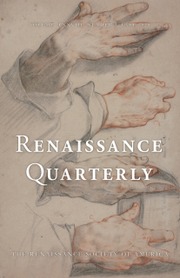Article contents
Squeezing, Squirting, Spilling Milk: The Lactation of Saint Bernard and the Flemish Madonna Lactans (ca. 1430–1530)
Published online by Cambridge University Press: 20 November 2018
Abstract
The focus on three drops of milk issuing from the Virgin’s breast in “The Virgin in Front of a Fire Screen” was inspired by contemporary representations of the Lactation of Saint Bernard. This latter iconography provides the visual context for the vivid address of eroticized depictions of the Madonna’s “one bare breast” in Flemish art and shows the intricate connections between visuality and materiality in fifteenth-century Flemish religious art. Some depictions of Saint Bernard’s lactation transform the Madonna’s jets of milk into rays of light aiming for his eyes, stressing the interchangeability of materiality and visuality as modes that were expected to facilitate and/or authenticate miraculous appearances of the Madonna.
- Type
- Research Article
- Information
- Copyright
- Copyright © 2018 Renaissance Society of America
References
- 5
- Cited by




